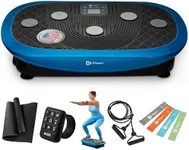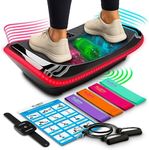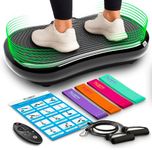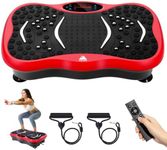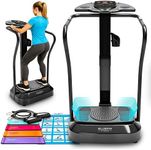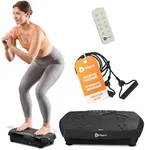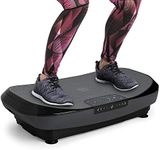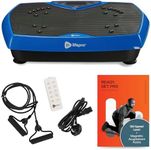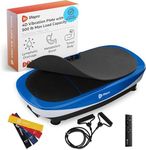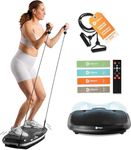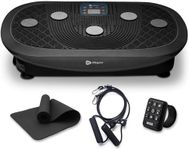Buying Guide for the Best Fit Vibration Plate
When choosing a fit vibration plate, it's important to consider your fitness goals, available space, and personal preferences. Vibration plates can be a great addition to your workout routine, offering benefits such as improved muscle strength, flexibility, and circulation. However, not all vibration plates are created equal, and understanding the key specifications can help you make an informed decision that aligns with your needs.Vibration TypeVibration type refers to the way the plate moves to create vibrations. There are generally three types: oscillating, linear, and tri-planar. Oscillating plates pivot around a central point, mimicking a see-saw motion, which is great for weight loss and muscle toning. Linear plates move up and down, providing a more intense workout suitable for muscle building. Tri-planar plates combine both movements for a comprehensive workout. Choose the type based on your fitness goals; for general fitness and weight loss, oscillating might be best, while for muscle building, linear or tri-planar could be more effective.
Frequency RangeFrequency range indicates how fast the plate vibrates, measured in Hertz (Hz). A lower frequency (5-20 Hz) is suitable for relaxation and balance exercises, while a medium frequency (20-35 Hz) is ideal for muscle toning and circulation improvement. Higher frequencies (35-50 Hz) are used for intense muscle workouts and rehabilitation. Consider your fitness level and goals when choosing the frequency range; beginners might start with lower frequencies, while more advanced users may benefit from higher frequencies.
AmplitudeAmplitude refers to the height of the vibration movement, usually measured in millimeters. A higher amplitude means more intense vibrations, which can lead to more effective workouts. Low amplitude (1-2 mm) is suitable for gentle exercises and rehabilitation, medium amplitude (3-5 mm) is good for general fitness and toning, and high amplitude (6-10 mm) is best for intense muscle workouts. Choose an amplitude that matches your fitness level and the intensity of workouts you desire.
Platform SizePlatform size is the surface area of the vibration plate where you stand or perform exercises. A larger platform provides more space for a variety of exercises and is more comfortable for taller users. Smaller platforms are more compact and easier to store but may limit exercise options. Consider the space you have available and the types of exercises you plan to do when selecting the platform size.
Weight CapacityWeight capacity is the maximum weight the vibration plate can support. It's important to choose a plate that can comfortably support your weight to ensure safety and effectiveness. Most plates have a weight capacity ranging from 250 to 350 pounds. Always check the weight capacity to ensure it meets your needs, especially if you plan to use the plate with additional weights or resistance bands.
Additional FeaturesAdditional features can enhance your workout experience and include things like preset programs, remote control, Bluetooth connectivity, and resistance bands. Preset programs can provide guided workouts, while remote controls offer convenience. Bluetooth connectivity allows you to sync with fitness apps for tracking progress. Resistance bands can add an extra dimension to your workouts. Consider which features are important to you and how they align with your fitness goals and lifestyle.
